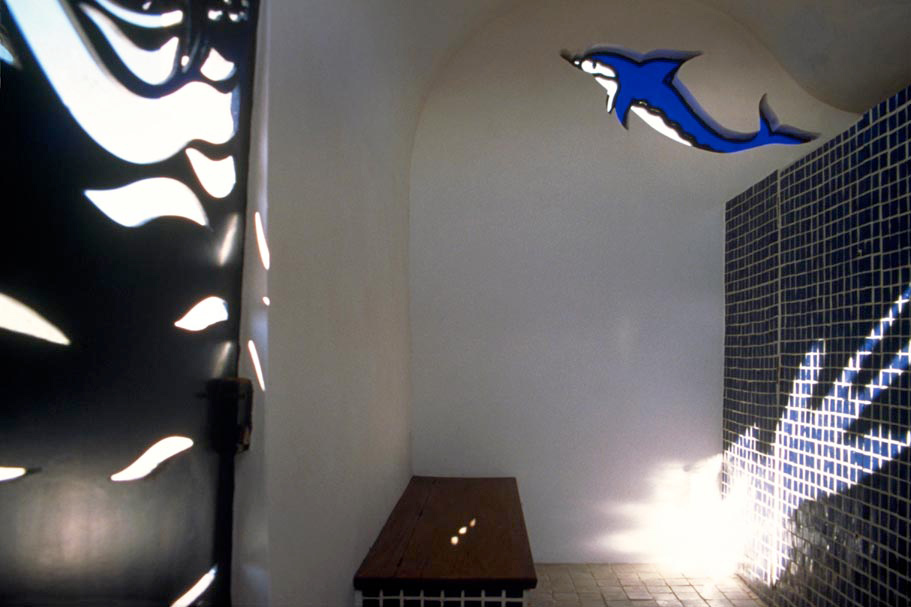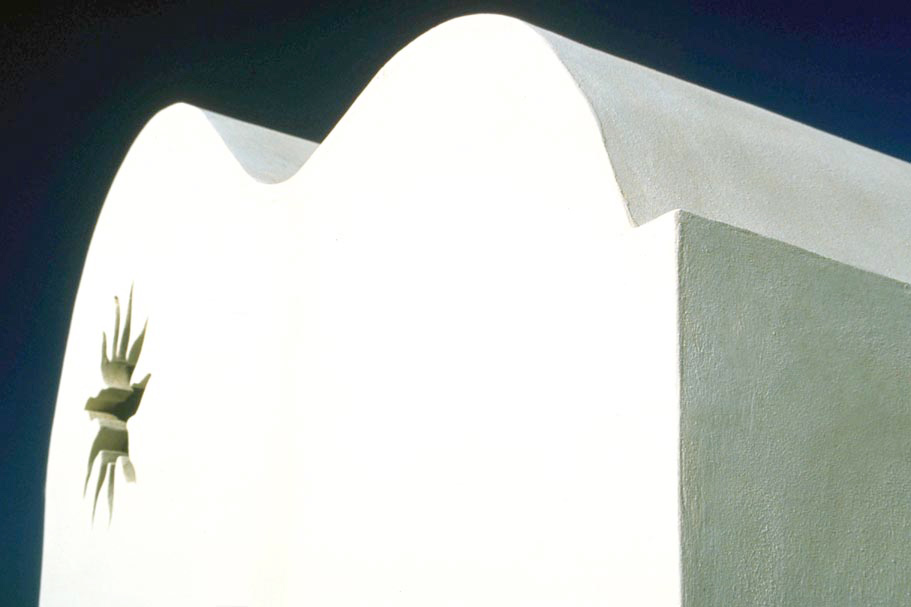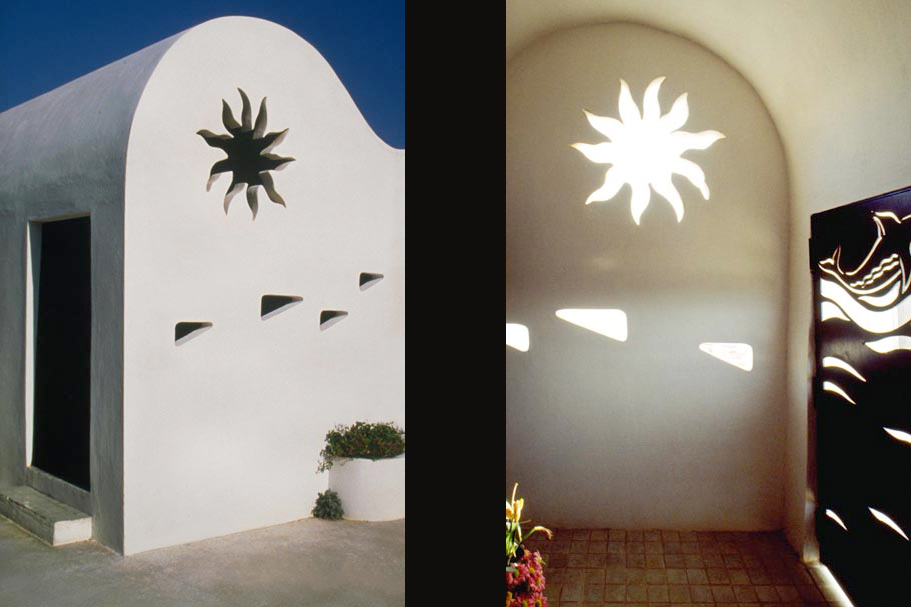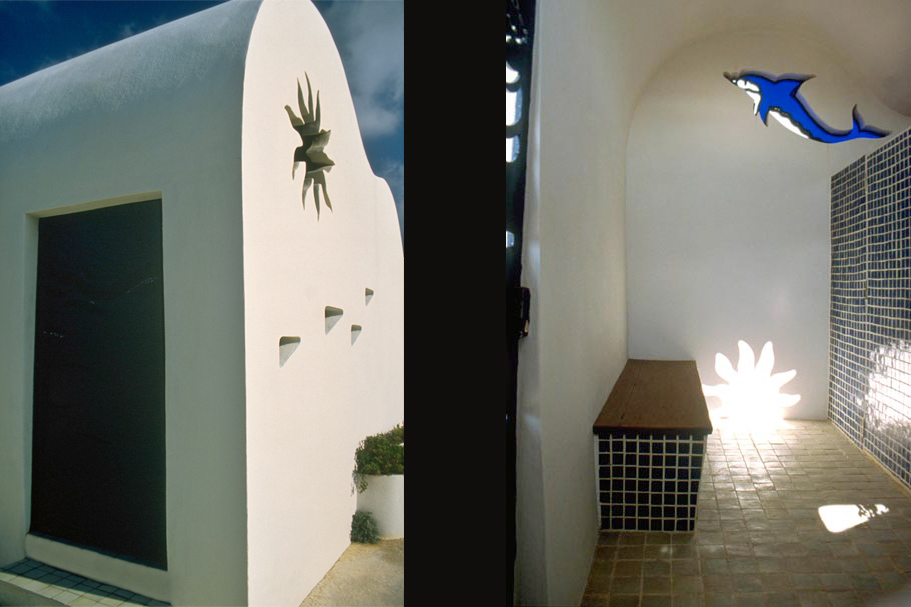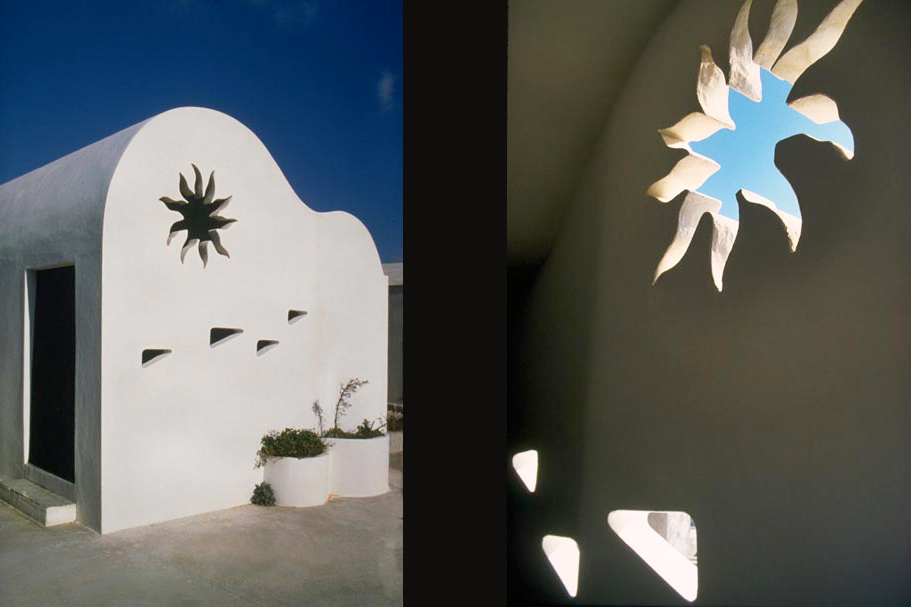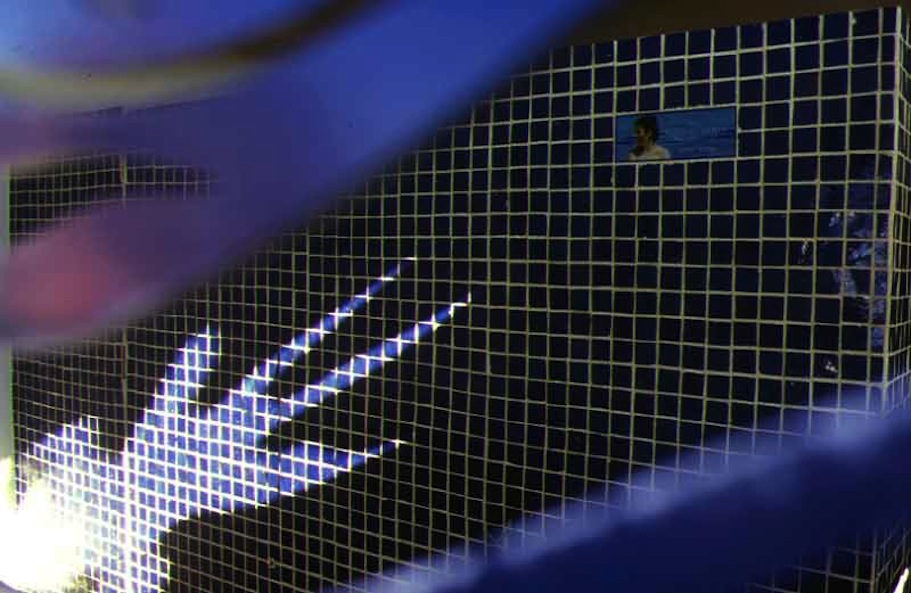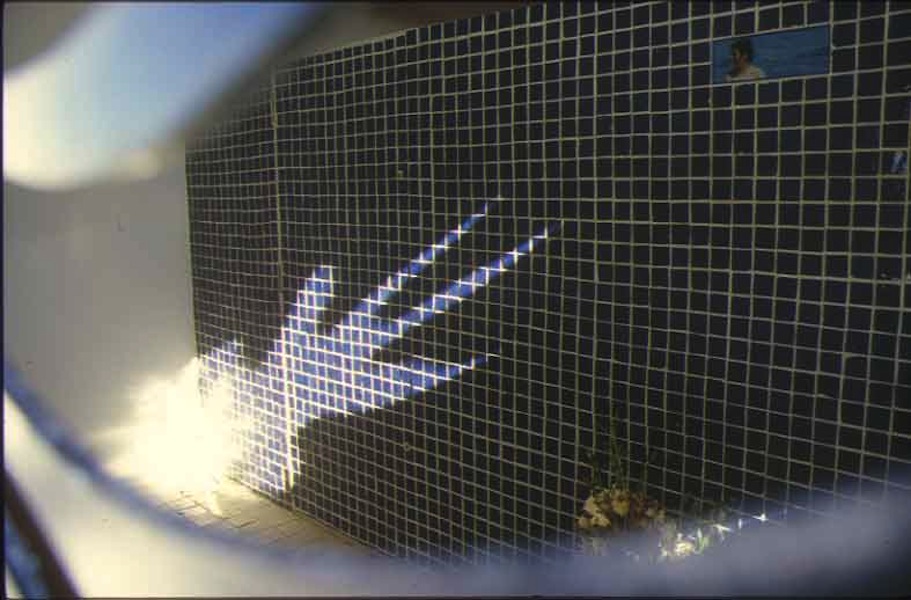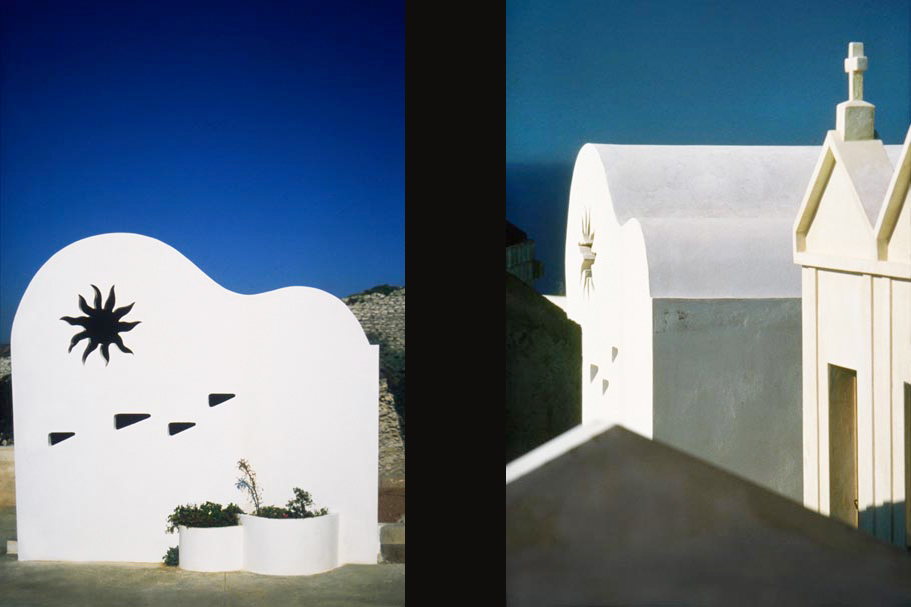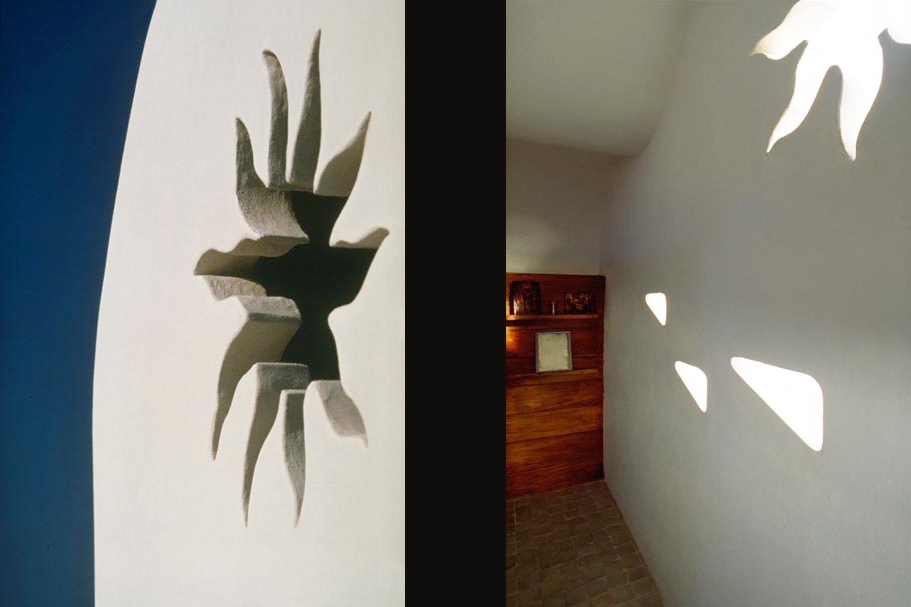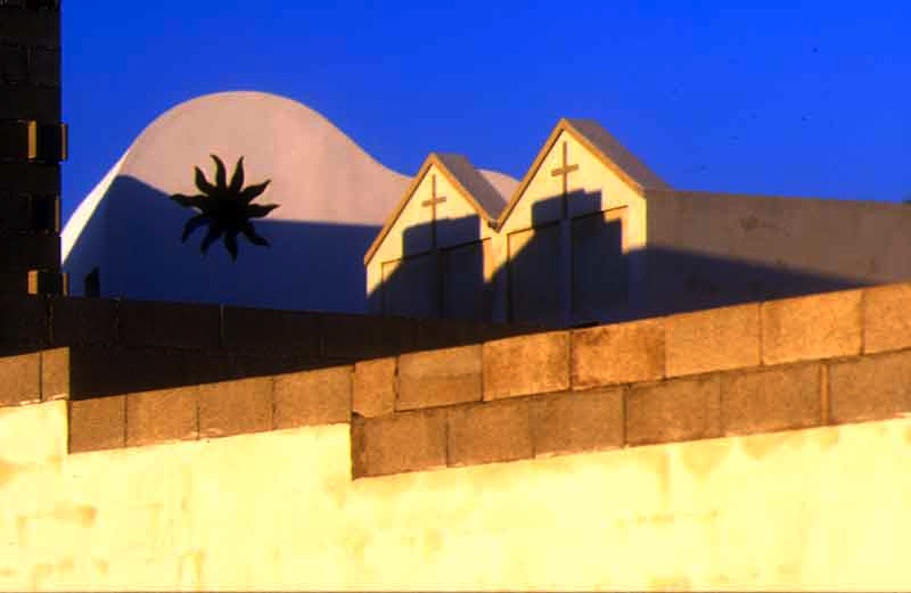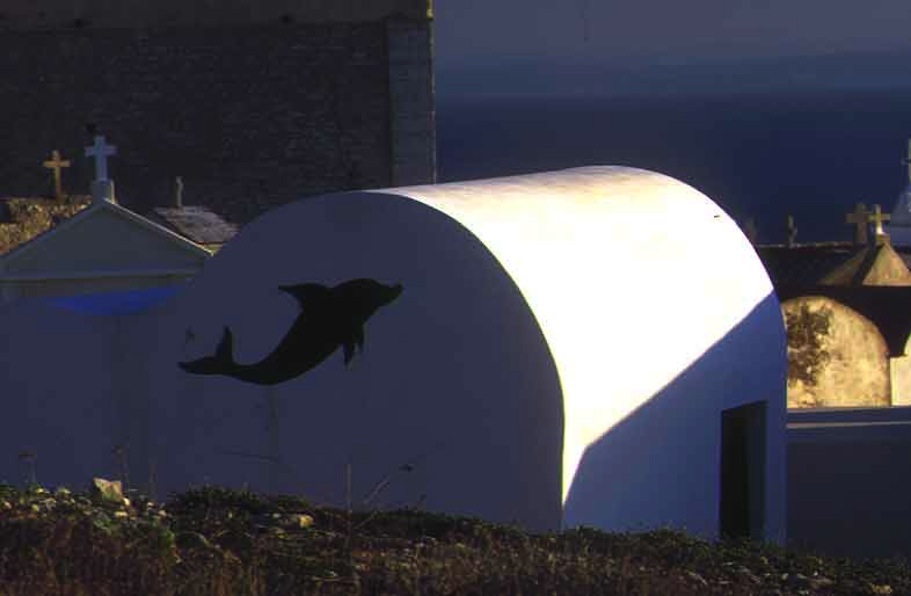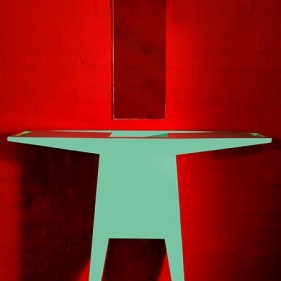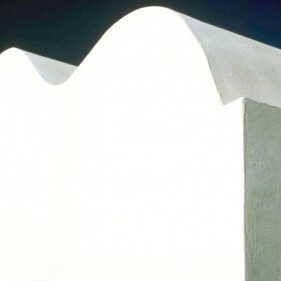Chapel/Bonifacio
A chapel, sea cemetery of Bonifacio. First there is a place at the end of an island, a headland over the sea open to the sky and winds, always blessed by the weather; a site of stone and memory indifferent to the storm : the sea cemetery of Bonifacio.
Small squares, streets lined with walls white, pink or gray; Greek tympanums or genoa patterns, oriental mosaics and Roman columns; walls tiled or bare, smooth or rough; roofs with soft curves or straight slopes, names we can perceive in the shadows behind the slatted doors : the city of the dead, hitched to the cliff, stands against landfill and disappearance.
Then follows the meeting between Bonifacio and a young woman of greek origin who from the start and forever knew she was home.
Then there is the tragedy of the untimely death of this woman who loved life, the sun, the call of the sea and the invitation to travel.
There is ultimately the strong and simple will of a husband to celebrate beyond death that which made the value and richness of the existence of the one he loved.
So there is at the end of the Bonifacio cemetery, born from all these circumstances, all these hazards and the need for memory this white chapel, memento of a wave, a shaft of light under the marine and solar signs of the Mediterranean civilisation.
To the North and to the West, chasing after its Cretan brothers responsible for leading the dead to the Fortunate Isles, a leaping dolphin pierces through the iron and cement.
To the South, the sun follows the contours of his copy carved in the stone, enters the chapel and, according to the seasons, every hour of the day other suns are thus born and die, either dim or sharp, focused or stretched, throbbing on the white walls, stroking the blue earthenware. And sometimes, late into the night, a tealight burns by an icon.

